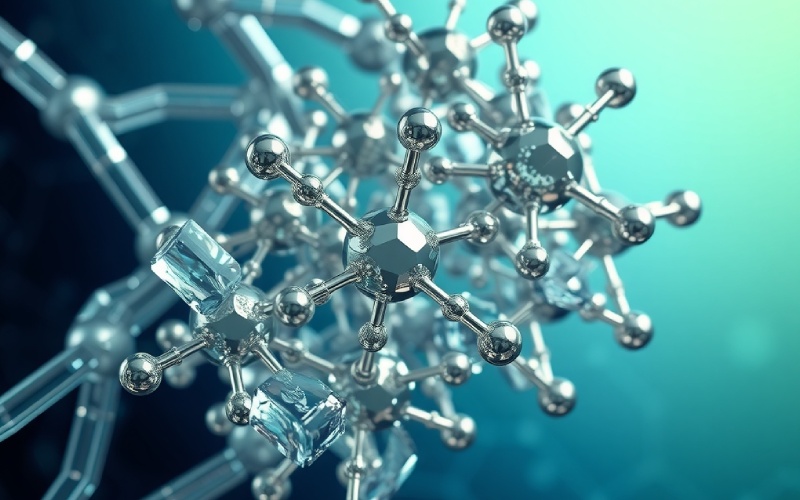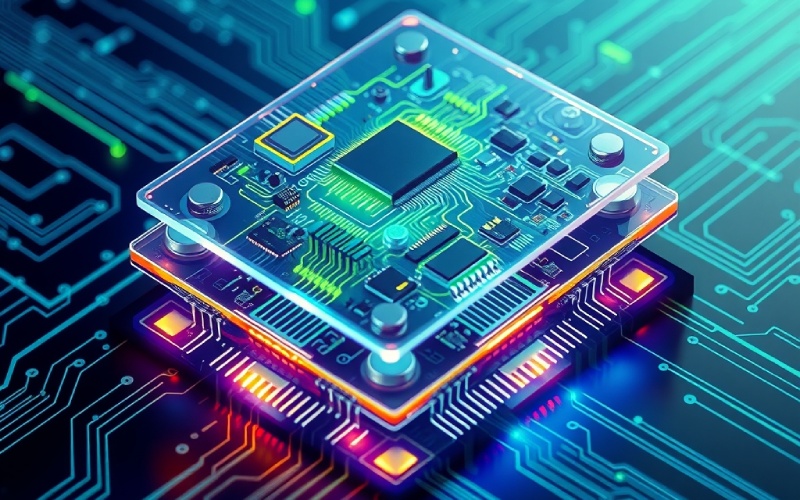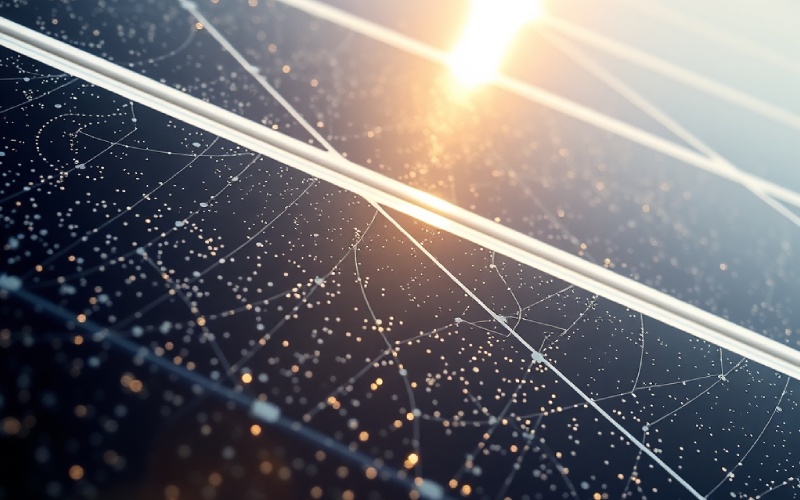Tecrübemiz ve bilgi birikimimizle Istar'ın projenize başlamanıza yardımcı olmasına izin verin!
Tasarım dosyalarınızı ve üretim gereksinimlerinizi yükleyin ve 30 dakika içinde size geri dönelim!

We hear a lot about metals and nonmetals. But there is a special group right in the middle that I think is the most interesting. They are called metalloids, and they have some really cool features and uses. If you have ever wondered what makes your computer chip work or what gives some fireworks their bright green color, you are in the right place. In this article, I am going to take you on a trip to explore the amazing world of metalloids. We will look at what they are and where they are on the periodic table. We will also see how we use them every day.
Have you ever met someone who is a little bit of an athlete and a little bit of a bookworm? That is kind of what metalloids are like in the world of elements. They are not quite metals and nonmetals. Instead, metalloids show features that are somewhere in between. Think of metalloids as the mixed-breed of the element world. They have a metallic appearance. This means they can be shiny like a metal. But, they are also brittle. This means they can break easily, a feature they share with nonmetals.
There is no exact number of metalloid elements that everyone agrees on. But most scientists say there are six main ones. The metalloids are boron, silicon, germanium, arsenic, antimony, and tellurium. You can find these special elements in a zigzag line on the periodic table. This line separates the metals and nonmetals. This in-between nature gives metalloids some really unique features and uses. It is these special traits that make metalloids so important in our daily lives.
The word metalloid itself comes from the Latin word for “metal” and a Greek word that means “looks like.” So, the name literally means “looks like metals.” But as we will see, the physical and chemical features of metalloids are a fascinating mix. This unique mix is why metalloids play such a big part in so many different technologies. Without these amazing elements of metalloids, the world we know would be a very different place.
Aşağıdaki tablo, bu metaloidlerin temel özellikler bakımından nasıl karşılaştırıldığını göstermektedir:
| Metaloid | İletkenlik | Toksisite | En İyi Kullanımlar |
|---|---|---|---|
| Bor | Düşük | Düşük | Cam, alev geciktiriciler |
| Silikon | Yarı İletken | Toksik olmayan | Elektronik, güneş enerjisi |
| Germanyum | Yarı İletken | Düşük | Fiber optik, kızılötesi |
| Arsenik | Zayıf | Yüksek | Yarı İletkenler (kontrollü) |
| Antimon | Zayıf | Orta düzeyde | Alev geciktiriciler, piller |
| Tellür | Fotokondüktif | Orta düzeyde | Güneş panelleri, termoelektrik |
| Polonyum | Zayıf | Son derece yüksek | Statik gidericiler, özel |
If you want to find the metalloids, you will need to look at a periodic table. The periodic table is a chart that organizes all the elements we know about. The elements of metalloids are found in a special place on this chart. They make a diagonal, stair-like line. This line separates the metals from nonmetals. On the left side of this line, you will find the metals. On the right side, you will find the nonmetals on the periodic table. The metalloids sit right on this dividing line.
This special spot is a big clue about the features and uses of metalloids. Being on the line between metals and nonmetals is why they have features of both. Think of it like a border between two countries. The people who live near the border might speak both languages and have customs from both places. In the same way, metalloids share traits with their neighbors on the periodic table. This is a key reason why these metalloid elements are so useful in many ways.
So, when you look at a periodic table, look for the zigzag line. The elements that touch this line are the metalloids. This group of elements includes silicon, boron, arsenic, antimony, germanium, and tellurium. It might be a small group, but their impact is huge. The next time you see a periodic table, you will know exactly where to find these interesting metalloids.

What really makes metalloids different is their mix of physical features. Imagine a material that looks like a metal but does not act exactly like one. That is a metalloid. Metalloids usually have a metallic appearance; they are often shiny. However, unlike metals, metalloids are often very brittle. This means that if you try to hammer a metalloid into a thin sheet, it will probably break into pieces. This is one of the physical properties of metalloids that makes them different from metals.
Another one of the key physical features of metalloids is their ability to conduct electricity. Metalloids are what we call a semiconductor. A semiconductor is a material that can carry electricity, but not as well as a metal. This is why metalloids are often used in electronics. Think of it like a water tap for electricity. A semiconductor lets us control the flow of electricity. We can turn it up or down as needed. This is a very important feature that we will talk more about later.
The physical features of metalloids are a true mix of the features of metals and nonmetals. They are solid when at room temperature. They also have a wide range of densities and hardness. For example, silicon is a hard, crystal-like solid. This mix of different physical features is what makes metalloids so useful in so many different ways.
When it comes to chemical reactions, metalloids can be a bit of a puzzle. Sometimes they act like metals. Other times they act like nonmetals. It all depends on what other elements they react with. This is one of the key chemical features of metalloids. For example, when a metalloid reacts with a metal, it usually acts like a nonmetal. But when it reacts with a nonmetal, it can act more like a metal. This double nature is what makes the chemical and physical features of metalloids so interesting.
A good example of this is how metalloids form bonds with other atoms. Metalloids tend to form covalent bonds, which is something that nonmetals do. In a covalent bond, atoms share an electron. This is different from metals, which usually give away an electron. The number of electrons in the outer shell of a metalloid atom is what decides how it will react. Boron, for example, has three electrons in its outer shell. It tends to act more like a metal by giving up these electrons. On the other hand, arsenic has five outer electrons. It is more likely to act like nonmetals by gaining electrons.
Metalloids can also form alloys with metals. An alloy is a mix of a metal with another element. By adding a metalloid to a metal, we can create an alloy with new and better features. For example, adding the metalloid antimony to lead makes the lead harder and stronger. This is just one of the many ways the unique chemical behavior of metalloids makes them so useful.
If there is one metalloid you have probably heard of, it is silicon. Silicon is the second most common element in the Earth’s crust, right after oxygen. You can find silicon in all sorts of things, from sand to rocks. The atomic number of silicon is 14. But what really makes silicon so famous is its job as a semiconductor. In fact, pure silicon is the most common material used as a semiconductor in the world.
Your computer, your phone, and almost any other electronic device you can think of has silicon in it. That is because silicon’s ability to be a semiconductor is perfect for making computer chips and other electronic devices. As a semiconductor, silicon can be “doped” with a small amount of an impurity. This process changes the electrical conductivity of the silicon. This allows us to create the complex circuits needed for modern electronics. The entire field of electronics is built on the amazing semiconducting features of silicon.
But the features and uses of silicon do not stop there. When silicon is mixed with oxygen, it can form a polymer with a silicone-oxygen backbone. This material, known as silicone, is used in a wide variety of products. You can find silicone used as a sealant in your bathroom, in cooking tools, and even in some medical implants. By changing the polymer chain, we can create silicones with a wide range of properties. So, from the high-tech world of computer chips to the everyday items in your kitchen, the metalloid silicon is all around us.
Another important metalloid is boron. Boron is a very interesting element with some unique features and uses. Pure boron is a black, shiny, and extremely hard solid. In fact, crystal-like boron is one of the hardest things known to us. Boron is so hard that it can be used to make things stronger. For example, boron is often added to steel to create a very hard alloy. This alloy is then used in building applications where strength is important.
Boron is also used to make a special kind of glass called borosilicate glass. You might know it by its brand name, Pyrex. This type of glass is very good at resisting thermal shock. This means it can handle quick changes in temperature without breaking. This is why borosilicate glass is so great for baking dishes and lab tools. The boron in the glass helps to make it strong and long-lasting.
Besides these uses, compounds of boron, such as boric acid and borate, have some interesting effects on living things. Boric acid can be toxic to arthropods, like insects. That is why it is used in some bug killers. However, boron is also a key nutrient for plants. This interesting metalloid shows just how different the features and uses of the elements of metalloids can be.
When we talk about metalloids, it is important to also talk about arsenic and antimony. These two metalloids are probably best known for being poisonous. Arsenic, with an atomic number 33, has been used as a poison for hundreds of years. But like all metalloids, arsenic and antimony also have some useful features and uses.
For a long time, arsenic was used in bug killers and weed killers. While this use has gone down because it is poisonous, arsenic is still used in some products that protect wood. In the world of electronics, arsenic is sometimes used to dope a semiconductor, like germanium. This changes its electrical features. Arsenic can also be added to lead to create a stronger alloy. This type of alloy is used in ammunition and car batteries.
Antimony has a long history of use. It goes back to ancient Egypt where it was used in makeup. Today, antimony is still used to color paints. It is also often added to other metals to form an alloy. One important alloy is lead-antimony. It is used to make the grids in lead-acid batteries. Like arsenic, antimony can also be used in some special semiconductor applications because of its high charge mobility. So, while it is true that arsenic and antimony can be dangerous, they are also important metalloid elements with a variety of industrial uses.
Now let’s talk about two more interesting metalloids: germanium and tellurium. Germanium is a hard, brittle, grayish-white metalloid. It is chemically similar to silicon. Like silicon, germanium is an excellent semiconductor. In the early days of electronics, germanium was the main material used to make transistors. Today, silicon is more common. But germanium is still very important in certain uses.
One of the main uses of germanium is in fiber-optic systems. The tiny glass fibers that carry internet data and phone calls often have germanium in them. Germanium is also used to make infrared optics. These are used for things like the lenses in night-vision goggles. And just like silicon, germanium is used in some solar cell applications. This multi-purpose metalloid continues to play a key role in many modern technologies.
Tellurium is one of the rarest stable elements on Earth. This silvery-white metalloid gets its name from the Latin word for “earth.” With an atomic number of 52, tellurium has some interesting features and uses. One of its main uses is as an additive to steel. Adding a small amount of tellurium to steel makes it easier to work with. Tellurium is also used to make alloys with other metals. For example, it can be added to copper and stainless steel to improve their features. While not as well-known as some of the other metalloids, tellurium is still an important element with a number of special uses.

One of the most important features and uses of metalloids is their ability to act as a semiconductor. As we have talked about, a semiconductor is a material that can carry electricity, but not as well as a metal. The metalloids silicon and germanium are the most well-known examples of a semiconductor. But what makes a semiconductor so special?
The key to a semiconductor is that we can control its electrical conductivity. We can do this by adding a small amount of an impurity to the metalloid. This process is called “doping.” By doping a semiconductor, we can make it a better or worse conductor of electricity. This ability to adjust the electrical conductivity is what lets us create the complex circuits found in electronic devices. Without a semiconductor, we would not have transistors, computer chips, or solar cells.
So, the next time you use your phone or computer, remember the amazing metalloids that make it all possible. The unique semiconducting properties of metalloids like silicon and germanium are at the center of the modern electronics industry. The ability of a semiconductor to control the flow of electrons is what has allowed us to create the powerful and small electronic devices we use every day.
As we have seen, metalloids are a truly special group of elements. Their spot on the periodic table, right on the line between metals and nonmetals, gives them a unique set of features and uses. From their metallic appearance and brittle nature to their amazing ability to be a semiconductor, metalloids are vital to our modern world.
The wide range of properties that metalloids show makes them incredibly useful in many ways. They can be used to make super-hard alloys, special types of glass, and even medicines that save lives. The metalloids boron, silicon, germanium, arsenic, antimony, and tellurium each have their own special traits. These traits make them useful in different ways.
But maybe the most important contribution of metalloids is their role in the electronics industry. The semiconducting features of silicon and germanium have completely changed the way we live, work, and talk to each other. Without these amazing metalloids, the digital age would not be possible. So, the next time you think about the elements of the periodic table, do not forget about the metalloids. They may be a small group, but their effect is truly huge.